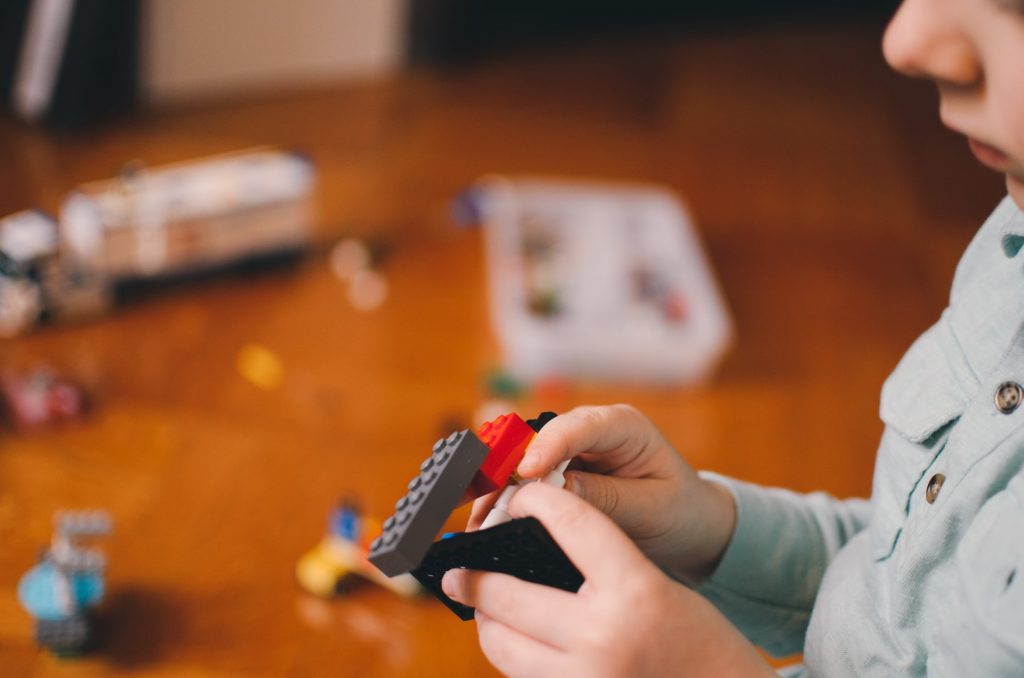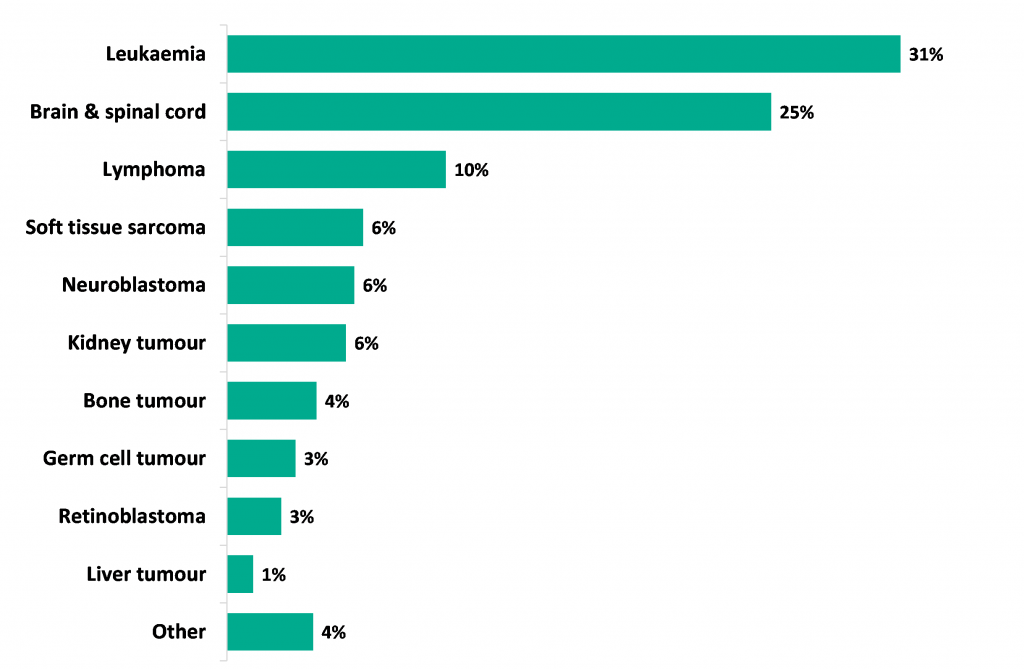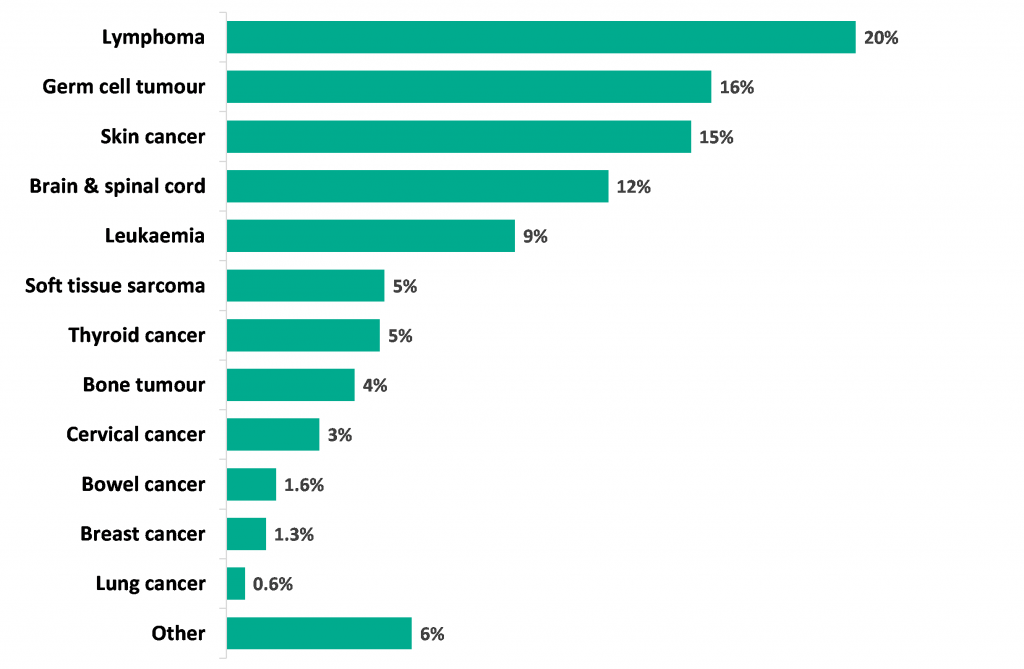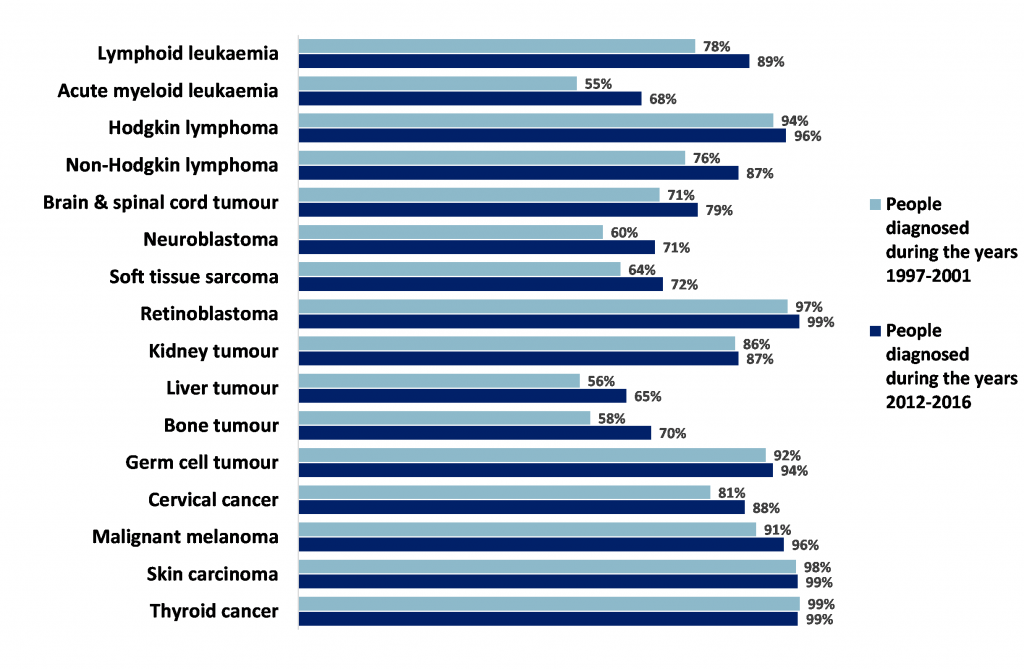
We have published the first UK-wide report on children, teenage and young adult cancers in almost a decade. The report combines data on cancer incidence, survival and mortality from cancer registries in the four UK countries.
This work is a collaboration between PHE and the national cancer registries in Northern Ireland, Scotland and Wales.
The data looks at all the main types of cancer in young people - here are five things you need to know.
1 - Every day in the UK 10 children or young people are diagnosed with cancer
While cancer is rare in children and young people, there are around 3,755 young people diagnosed with cancer each year in the UK. That’s 1,645 in children (aged 0-14 years) and 2,110 in teenagers and young adults (aged 15-24 years).
Cancer is more common in young males. Around 1 in every 420 boys under the age of 15 developed cancer compared to 1 in 490 girls. For young people aged 15-24, it was 1 in every 360 for males and 1 in 380 for females.
For both males and females, cancer incidence is higher in the first five years of life, falls to its lowest rate at age 5 to 9 years, and then starts to increase again from 10 years of age marking the start of an unbroken rise in incidence that continues into the teenage years and throughout adulthood.
The most common cancers diagnosed in children aged 0-14 years in the UK, based on cancers registered between 1997 and 2016

The most common cancers diagnosed in teenagers and young adults aged 15-24 years in the UK, based on cancers registered between 1997 and 2016

2 - Children and young people get different types of cancer compared to adults
Children and young people get different types of cancer to adults and are generally more treatable.
The most common cancers for adults are lung, breast and bowel cancers. The most common type of cancer in children is leukaemia, which accounts for about a third of all cases in this age group. A further quarter of cancer cases are brain and spinal cord tumours. 1 in 10 are lymphomas.
For young people aged 15-24, 1 in 5 of cases are lymphomas. Around 1 in 6 are germ cell tumours, most of which are testicular cancers. Around 1 in 7 are skin cancers, 1 in 8 are brain and spinal cord tumours and 1 in 11 are leukaemia.
3 - Around 1 in 5 cancers diagnosed in teenagers and young adults may be preventable
Around 15% of cancers diagnosed in people aged 15-24 years are skin cancers, which may be preventable by avoiding UV light exposure and burns from sunlight and use of sunbeds.
Cervical cancer accounts for 6% of cancers in females aged 15-24 and is largely preventable by the vaccination against human papillomavirus (HPV).
4 - Cancer survival in children and young people has improved for most cancers
More than eight out of ten young people diagnosed with cancer survive at least five years, and many of these are cured. Thanks to research and better treatment, survival has increased over the past 20 years.
Overall, 78% of children and young people diagnosed in 1997 to 2001 survived for at least five years. This went up to 86% for those diagnosed in 2012 to 2016: a statistically significant increase.
There was a marked increase in survival between these periods for children and young people with leukaemia, lymphomas, brain and spinal cord tumours, bone tumours, soft tissue sarcomas, neuroblastoma and malignant melanomas.
The highest survival rates were for Hodgkin lymphoma, retinoblastoma, germ cell tumours, and skin and thyroid cancers, with over 90% surviving five years after diagnosis.
There are several cancers that have poorer survival that need further research and better treatments, notably some of the brain cancers, bone tumours and soft tissue sarcomas.
Five year survival of children, teenagers and young adults aged 0-24 years with cancer in the UK

5 - Our data helps the understanding of children's and young people's cancers
Robust data gathering and analysis is a major part of what population-based cancer registries do. Reliable data on cancer incidence and survival across the population is important for understanding all cancers, including cancer in children and young people.
This information is essential for clinicians, health services and policy makers as it helps them work out what resources are needed to improve the care, diagnosis and treatment of cancer in children and young people.
This information helps children and young people with cancer, their families, and charities, understand more about the disease. This knowledge can make a real difference when dealing with something that is so emotionally challenging.
These data also help researchers compare on a global scale how the UK is performing compared to other countries.
This study is based in part on information collected and quality assured by the National Cancer Registration and Analysis Service (part of Public Health England), the Northern Ireland Cancer Registry, the Welsh Cancer Intelligence and Surveillance Unit (part of Public Health Wales) and the Scottish Cancer Registry (Public Health Scotland).
This work uses data provided by patients and collected by health services as part of their care and support.
Subscribe to our blog to receive updates on new posts here.
